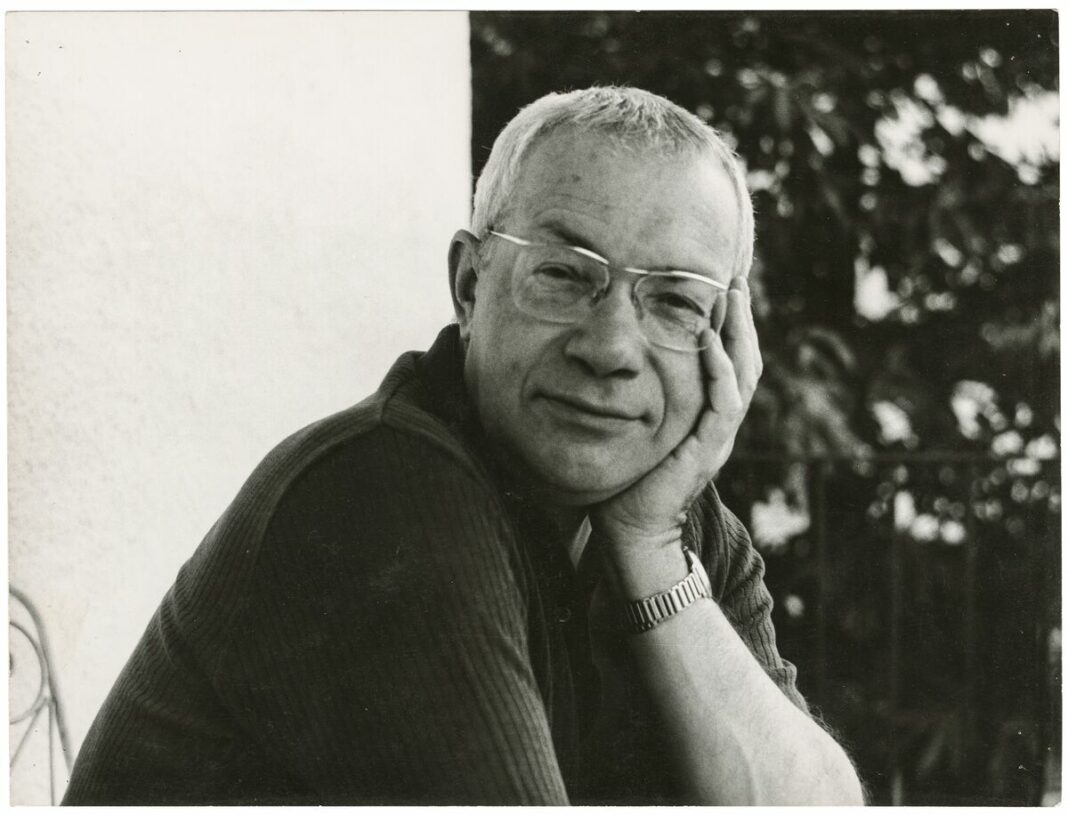Max Bill: A Pioneer of Concrete Art and Functional Design
Max Bill (22 December 1908 – 9 December 1994) was a Swiss architect, artist, painter, typeface designer, industrial designer and graphic designer.
Bill is widely considered the single most decisive influence on Swiss graphic design beginning in the 1950s with his theoretical writing and progressive work.[3] His connection to the days of the Modern Movement gave him special authority. As an industrial designer, his work is characterized by a clarity of design and precise proportions.[4] Examples are the elegant clocks and watches designed for Junghans, a long-term client. Among Bill’s most notable product designs is the “Ulmer Hocker” of 1954, a stool that can also be used as a shelf element, a speaker’s desk, a tablet or a side table. Although the stool was a creation of Bill and Ulm school designer Hans Gugelot, it is often called “Bill Hocker” because the first sketch on a cocktail napkin was Bill’s work.
Max Bill, a Swiss artist, architect, and designer, stands as a prominent figure whose innovative contributions have left an indelible mark on the realms of concrete art and functional design. His multifaceted career spanned several decades and encompassed a wide range of disciplines, including sculpture, painting, graphic design, and architecture. Through his unwavering commitment to purity, precision, and mathematical principles, Max Bill became a driving force behind the redefinition of art and design in the 20th century.
Formative Years and the Bauhaus Influence
Born on December 22, 1908, in Winterthur, Switzerland, Max Bill’s creative journey was deeply influenced by the ideals of the Bauhaus movement. He attended the Bauhaus school in Dessau, Germany, where he studied under luminaries such as Wassily Kandinsky, Paul Klee, and Oskar Schlemmer. The school’s emphasis on the synthesis of art, craft, and technology left an indelible impression on Bill, shaping his vision of art’s potential to enhance and integrate with everyday life.
Concrete Art: A New Visual Language
Max Bill’s exploration of form, color, and structure led him to become a pivotal figure in the Concrete Art movement. Characterized by its focus on geometric abstraction, mathematical precision, and visual clarity, Concrete Art sought to strip away unnecessary ornamentation and evoke an aesthetic purity that transcended cultural boundaries. Bill’s artworks, often composed of carefully calculated shapes and harmonious color palettes, exemplified this philosophy.
One of his most celebrated works, “Variation 11,” epitomizes the essence of Concrete Art. Through a simple arrangement of rectangles and squares in contrasting colors, Bill masterfully created a visual dialogue that stimulates contemplation and interaction. His dedication to reducing art to its fundamental elements while eliciting complex emotional responses showcased his mastery of balancing simplicity and depth.
Functional Design and the Ulm School of Design
Max Bill’s innovative spirit extended beyond the canvas, propelling him into the realm of functional design. He was a founding member of the Ulm School of Design (Hochschule für Gestaltung Ulm) in Germany, an institution renowned for its rigorous approach to design education. As a professor and later as the school’s director, Bill championed the principles of clarity, functionality, and industrial production.
His furniture designs, characterized by clean lines and ergonomic forms, exemplified his commitment to harmonizing aesthetics with utility. The “Ulmer Stool,” a minimalist yet versatile piece of furniture, encapsulates Bill’s ethos of creating designs that are both visually appealing and functional in daily life.
Max Bill’s legacy continues to resonate in the fields of art, design, and architecture. His relentless pursuit of purity, balance, and mathematical precision forged a bridge between artistic expression and practical functionality. Max Bill’s influence on Concrete Art and functional design remains an enduring testament to his visionary thinking, serving as an inspiration for future generations of artists and designers who seek to fuse creativity with purpose.
In a world that often values complexity, Max Bill’s commitment to simplicity and elegance serves as a timeless reminder of the power of reduction and the profound impact it can have on shaping the visual and functional landscape of our lives.












